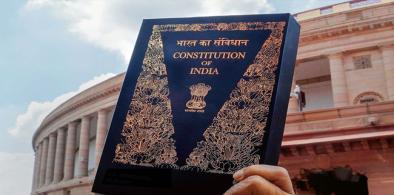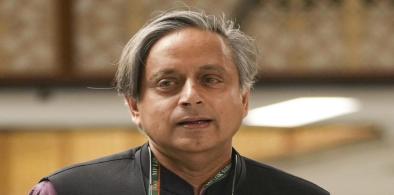Can a 'self-reliant' India edge out Vietnam as an alternative to China for supply chain manufacturing?
Riding the global strategic shift in manufacturing, India is on the cusp of attractive large-scale domestic and foreign investors by incentivizing supply chain manufacturing

Atmanirbhar Bharat Abhiyan, or a Self Reliant India, launched by Prime Minister Narendra Modi aims to make India a global supply chain. Tax breaks, modified PLI schemes, digitization, and massive investment are evidently the measures to uptick India its emerging future as the global supply chain manufacturing hub.
In the forum for supply chain resilience, under IPEF (Indo-Pacific Economic Framework) summit in May 2022, Prime Minister Narendra Modi was assertive about building up the supply chain manufacturing hub. This spills the beans of India’s strategic shift toward the manufacturing supply chain and its potential. Currently, for most of the new age manufacturing like electronic and digitization, manufacturing takes place in assembly operations in India and most of the components, and parts are imported.
According to Chris Devenshire Ellis of Dezan Shira & Associates, Hong Kong, China is no longer a manufacturing powerhouse. With the US-China war intensifying and China undergoing a zero COVID strategy, opportunities galore for other Asian nations to be alternatives to China. To this end, Vietnam emerged as a promising alternative manufacturing destination to China for the US, South Korea and Japan.
Advantage Vietnam
But India is not left behind. The truth of the matter is that Vietnam hogged the limelight with the USA and South Korea suddenly shifting their production facilities there. But, the irony is that US investment in India is far larger than in Vietnam. In 2021, US investment in India was US $ 8.5 billion, as compared to the US $ 2.7 billion in Vietnam.
Vietnam emerged as a new destination for the China+1 strategy for investors. Instead of abandoning China's investment, investors were preferring to supplement China's operation with low-cost manufacturing in Vietnam. According to Kyle Freeman, partner and Head of Dezan Shira & Associates, “ even prior to the start of the USA- China trade war and more recently the outbreak of COVID-19 pandemic, Vietnam offered the most competitive alternative to China for general manufacturing”.
Advantages enticing the investors were a stable government, accustomed to the similar cultural similarity of doing business with China, low labour costs, business-friendly tax regime and proximity to pre-existing Asia supply chain. Another factor, which led foreign investors to shift from China, was China’s transition towards consumption-led growth, which was apprehended to push cost factors due to a rise in wages, especially in coastal areas where export-oriented, mostly foreign-invested companies, have clustered.
Major US investors, such as Apple, Intel, Qualcomm, Universal Alloy Corporation, Nike, Key Tronics EMS, and Samsung of Korea moved to Vietnam.
Advantage India
Though India has so far not been seen as an alternative to China as Vietnam for supply-chain manufacturing, it has several factors to edge out Vietnam. Firstly, it has a larger domestic market and a more skilled workforce than Vietnam, such as in IT operation manufacturing. Secondly, its wage level is marginally higher than in Vietnam. Thirdly, it is far ahead in digitization than Vietnam. Lastly, political stability and strong democracy in India are ensured by its strong judiciary, which reaffirms India’s strength over Vietnam. Vietnam is ruled by communism and feared being enslaved by large communism like China.
According to a JETRO survey, India’s annual manufacturing compensation to workers was US $ 3,982 in 2017, as compared to US $ 3,673 in Vietnam. In comparison to wage levels in China, wages in Vietnam were 63 per cent cheaper as compared to 61 per cent cheaper in India. The marginal difference in wage level is offset by more skill of the Indian workforce in terms of IT solutions.
Currently, India’s middle-class market is variously estimated around 250 million, which is similar to China. It provides a strong base for insulation while the global export market is in deep volatility owing to the USA - China trade war and unabated Ukraine – Russia dispute. In contrast, Vietnam is wooed by a small domestic market and its over-dependence on export warrant higher market risk. India is now one of the few countries where both cheap labour and a large wealthy consumer class go- hand–in–hand.
Riding the global strategic shift in manufacturing, India is on the cusp of attracting large-scale domestic and foreign investors by incentivizing supply chain manufacturing. The launching of a new model of PLI scheme (Production Linked Incentive) is a case in point. One of the main modifications in the policy is the broadening of the scope of the scheme. Hitherto, only three industries were focused under the scheme. Now 13 industries were included in the scope.
New supply chain thrusts
Under the PLI scheme, the government provides 4 to 6 per cent incentives on incremental sales of manufacturing for 5 years over the base period. In the new model of PLI, thrusts were given on supply chain industries relating mainly to IT and digital industries.
Recently, India's Ministry of Electronics and Telecommunication ( Meity) approved a comprehensive policy for the development of the semiconductor and display manufacturing ecosystem. Under the policy, the government will provide incentives worth Rs 760,000 million over a period of five years. Simultaneously, under the PLI scheme, the government will give incentive support of Rs 553,920 million ( US$ 7.5 billion) for manufacturing IT hardware and the development of electronic manufacturing clusters.
What hindered India from being seen as an alternative to China was its laggard bureaucracy and not its economic merits. According to the Asia Briefing survey, India is neck and neck with Vietnam in terms of labour productivity growth and wage level, except in bureaucracy. The antiquated bureaucracy stalled India’s promising parameters for foreign investment opportunities, causing delays in multiple approvals and raising the cost of projects.
Notwithstanding, investment from the US surged. The paradox of American investment is that it defied the COVID-19 pandemic, which crippled the manufacturing sector, and poured investment commensurate with an uptick in digitization.
(The writer is a former Adviser, Japan External Trade Organization, New Delhi. Views are personal.)




















Post a Comment